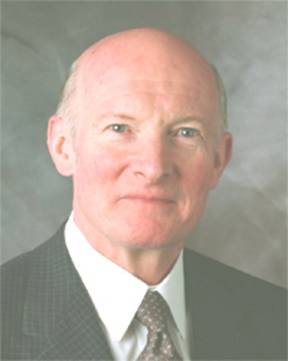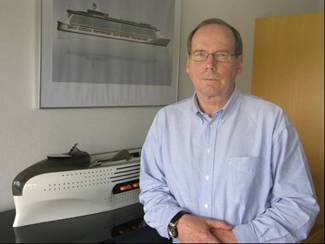IMPROVE Project Final Workshop
Invited Speakers
Lecture Title: "Next Generation Ship Structural Design”
Lecture Summary: Ship structural design continues to pose challenges for the design team to effectively address inherent complexities, evolving performance requirements from owners and regulators, and need for efficient integration with the overall ship design process. Next generation ship structural design tools and methods must further unify structural design process sub-elements into a more efficient and higher fidelity process that supports the realization of engineering integrity with optimized performance for the owner/operator. Advances in design tool architecture, geometry and topology modeling, loads analysis, and structural evaluation must be better unified in order to achieve progress toward these objectives. The paper gives some examples and suggestions as to how these needs (more unity among the structural design process sub-elements and better integration with the overall ship design process) can be achieved.
Speaker Short Biography: Dr. Owen F. Hughes is Professor of Ship Structures, Department of Aerospace and Ocean Engineering, at Virginia Tech. He is recognized internationally as a pioneer in the field of first-principles structural design, having been one of the first to achieve a synthesis of finite element analysis, ultimate strength analysis and mathematical optimization. In doing so he has made several fundamental developments in all three of these areas. His book Ship Structural Design, published in 1983, presented an entirely new method of ship structural design, as indicated by its subtitle: A Rationally-Based, Computer-Aided Optimization Approach. He also implemented the method in a computer program called MAESTRO (Method for Analysis, Evaluation and STRuctural Optimization). MAESTRO is now used by 13 navies, by various structural safety authorities, and by over 80 structural designers and shipyards in Europe, North America, Asia and Australia.
Besides his textbook, Dr. Hughes is the author or co-author of over 60 journal articles and conference papers.
Dr. Hughes has been NavSea Research Professor at the US Naval Academy, chairman of the SNAME Panel on Design Procedures and Philosophy and chairman of the ISSC Committee on Computer-Aided Design. His education includes: PhD (Naval Architecture) Univ. of New South Wales, 1970; MS (Naval Architecture), MIT, 1963; BS (Naval Architecture), MIT, 1961. |
 |
Lecture Title: "Ship Design for Performance"
Lecture Summary: Naval architects need a methodology for ship design that guides them through the design process. This methodology needs to be open for new solutions and innovations. The capacity and performance of alternative solutions are evaluated against a few major design criteria to optimize the ship for the intended mission. Key performance indicators are use to select the most suitable design. Today energy efficiency and reduction of emissions have become very important among these performance indicators.
Speaker Short Biography: Professor, Dr. H.C. Kai Levander has been in charge of Naval Architecture at Aker Yards. He was responsible for R&D, concept development, feasibility studies and new building projects in the Cruise and Ferries Business Area. Kai Levander graduated in 1967 as a Naval Architect from the Helsinki University of Technology. He has been with Aker Yards, Kvaerner Masa-Yards and Wärtsila Marine since 1969, mostly working with research and development tasks. He has been the innovator in many ship projects such as the Finnjet Gas Turbine ferry, the cruise ferry Silja Serenade, with the indoor atrium street and the Color Fantasy, a “Cruise Ship with Car Deck”. Among his cruise ship projects the All-Outside-Cabin concept of MS Royal Princess, the Windstar sailing cruise ship, the Diamond SWATH-Cruiser and the Carnival and Costa Panamax vessels can be mentioned. Through his career Kai Levander been involved in the development of new cruise vessels for Royal Caribbean Cruises, including the Oasis of the Seas cruise ship of 220 000 GT. |
 |
Since 1995 Kai Levander is Associated Professor in Ship Design at the Norwegian University of Science and Technology in Trondheim. In 2008 he receives an honorary doctorate from the Helsinki University of Technology. After nearly 40 years in the shipbuilding business Kai Levander retired in September 2008 and is now an independent consultant.
Kai Levander
SeaKey Naval Architecture
Tuhtopolku 4A9
FI-20810 Turku
Finland
Mobile +358 400 402 609
E-mail kai.levander@gmail.com |
|
|



